This episode we’re going to look at the 3nps modes for extended range 7 string guitar. The tuning will be B E A D G B E. If you want to know more about modal theory then check out this post for some extended ideas on how the modes for 7 string guitar work. Let’s Go!
Let’s take a look at the major scale modes for 7 string guitar. If you know the modes for 6 string guitar then this will be made even easier since we can reference these. However if you started your guitar story on a 7 string then this will be a helpful starting point. You can also check out the pentatonics for 7 string if you’re not ready for these yet. If you don’t know the modes at all it might be worthwhile getting comfortable with these first. You can check out the 6 string major scale modes here.
Modes for 7 String Guitar
Lets look at these in the key of C Major. This is nice an easy because its all the natural notes, i.e no sharps or flats. This will be the notes C D E F G A B.
We can begin in the C-major scale or Ionian mode from fret #1 on a 7 string since that’s the note C. We’ve not included fretboard number markers to force you to learn how they connect to one another.
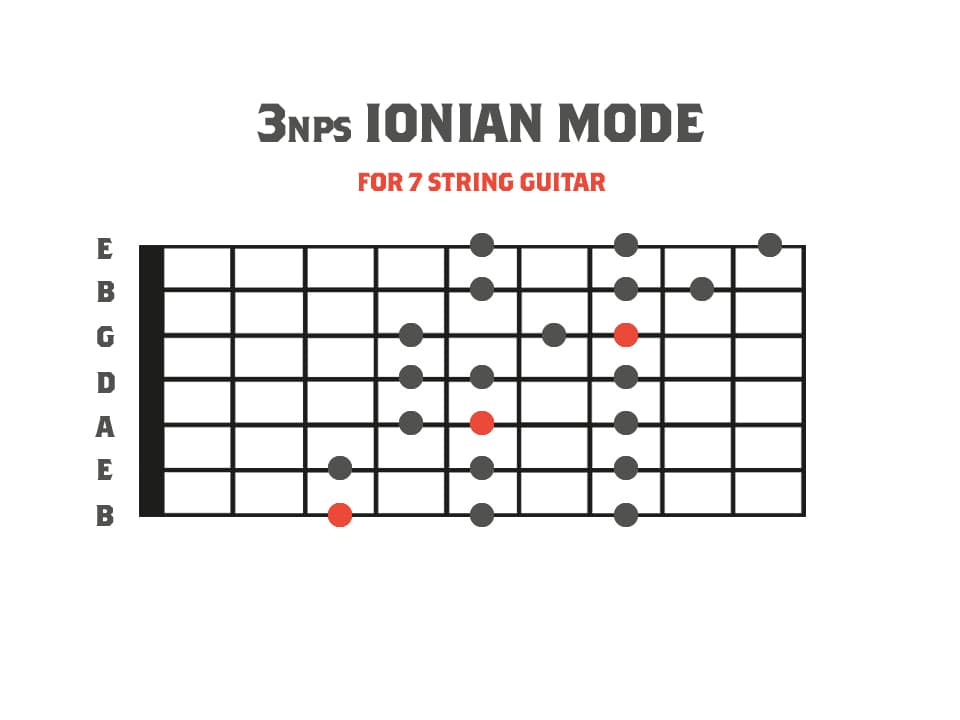

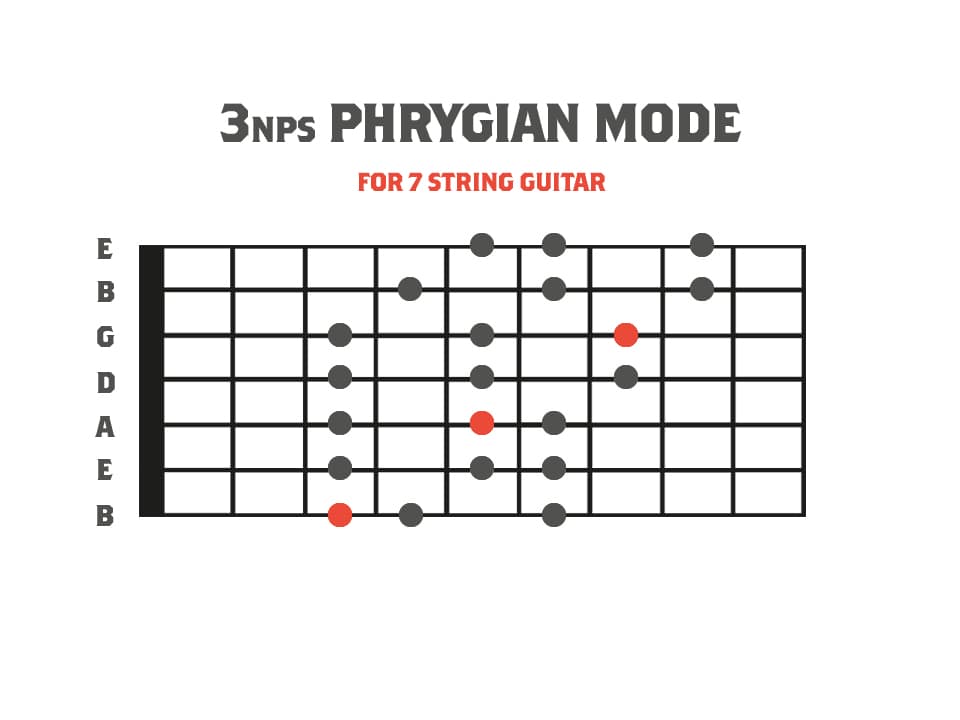
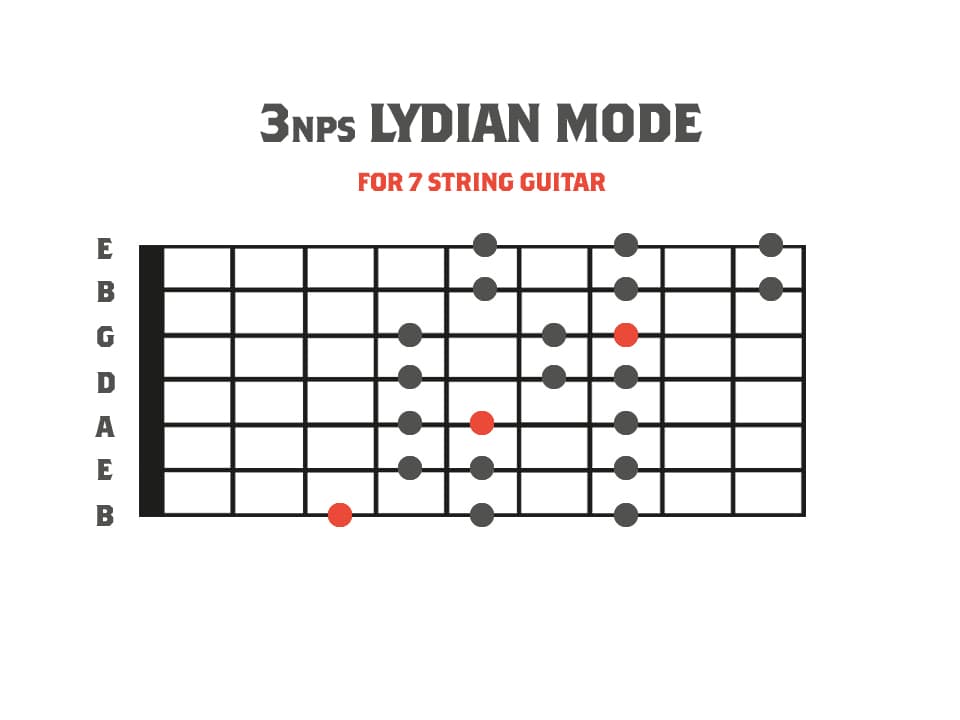
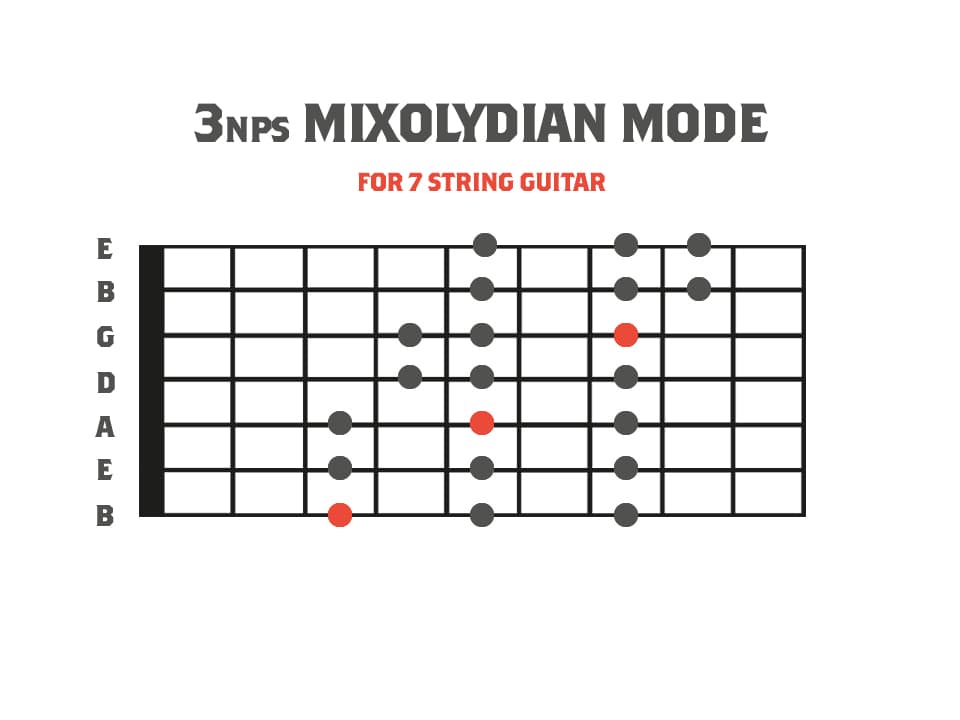
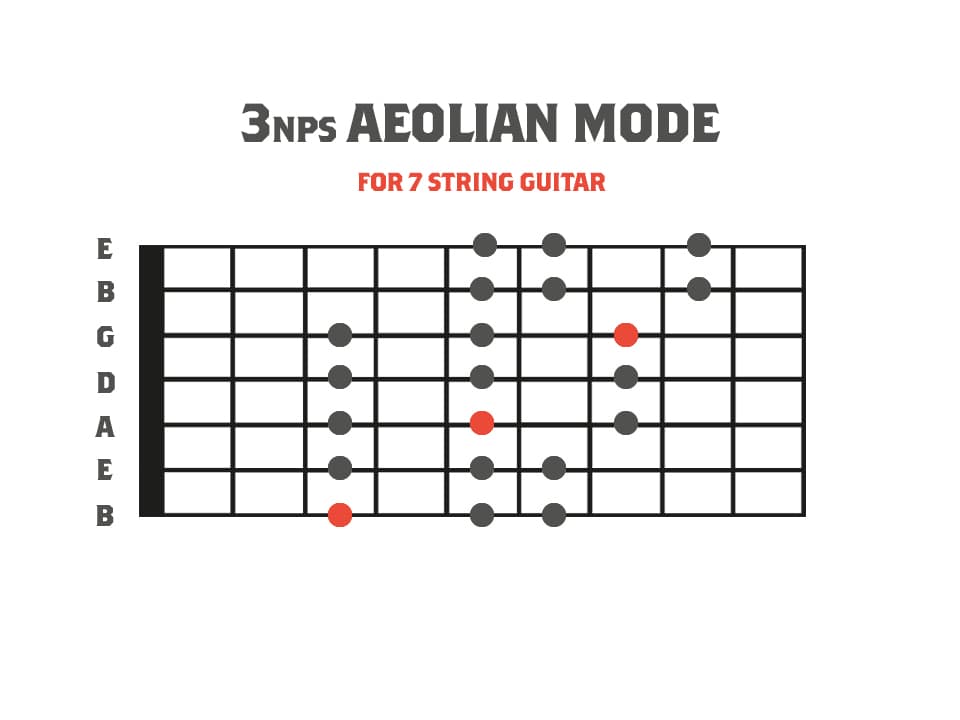
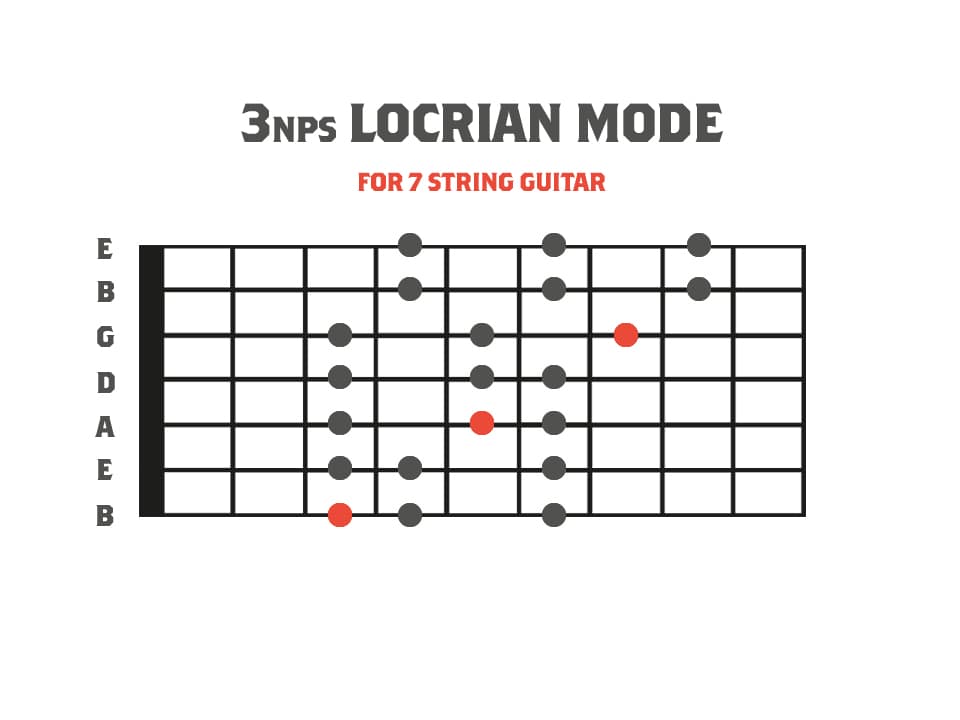
Some Helpful Theory – Less Is More
Modes for 7 string guitar buy you substantially more fretboard in a smaller space. With a low B string you are granted an extra lower octave. For example a 3 octave G major scale on a 6 string guitar would look like this:
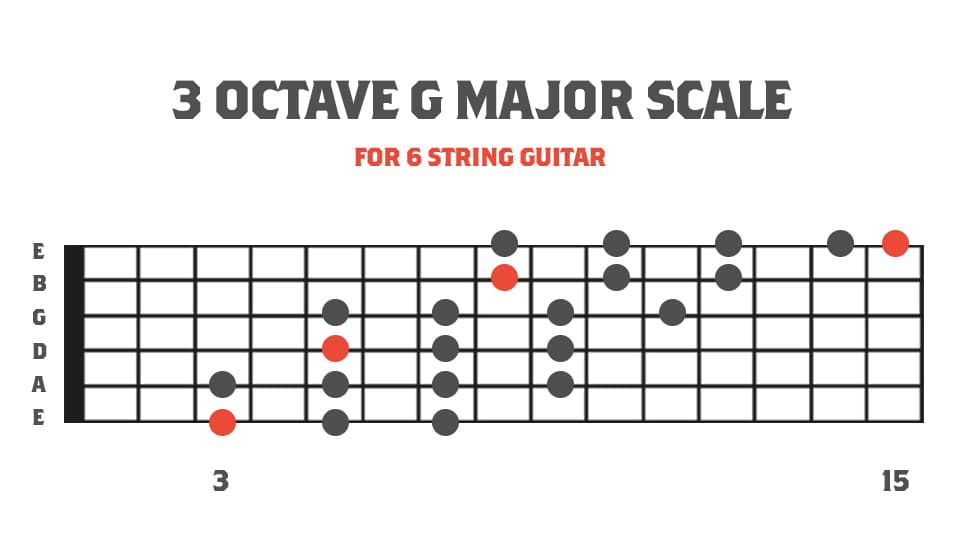
This would mean you’d have to do a bunch of crazy slides from 3 to 15! However on a 7 string the same series of notes can be done in a single position and a half step like this:

This means you could do a massive sounding picking lick all in one position but to the listener it sounds like you’re blazing all over the neck. More can be done in a smaller space on a 7 string.
Referencing The Six String Shapes
If you already know the modes for 6 string guitar and you’re exploring the world of 7 string, you can reference the 6 string modes to help you navigate the neck. The only difference really is that the root note changes.
It’s important to know where the root notes are for your modes. Only until you begin to write modal progressions will this truly be understood. This is why we show the root note for each mode as opposed to the root note for the parent scale.
Ionian on a 7 String references 6 String Lydian
Dorian on a 7 String references 6 String Mixolydian
Phrygian on a 7 String references 6 String Aeolian
Lydian on a 7 String references 6 String Locrian
Mixolydian on a 7 String references 6 String Ionian
Aeolian on a 7 String references 6 String Dorian
Locrian on a 7 String references 6 String Phrygian
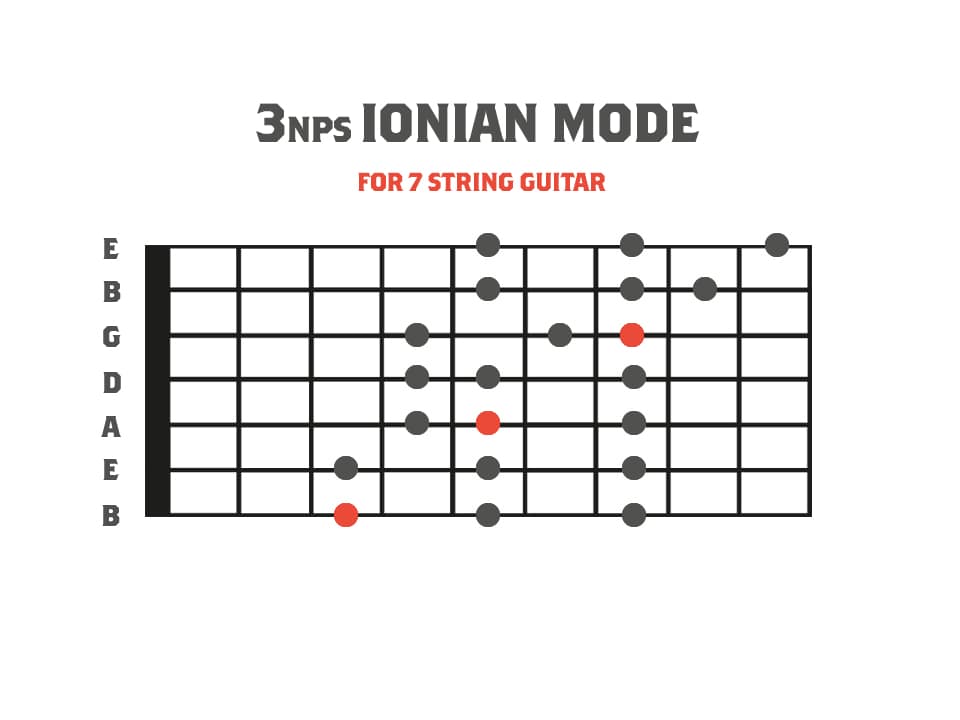
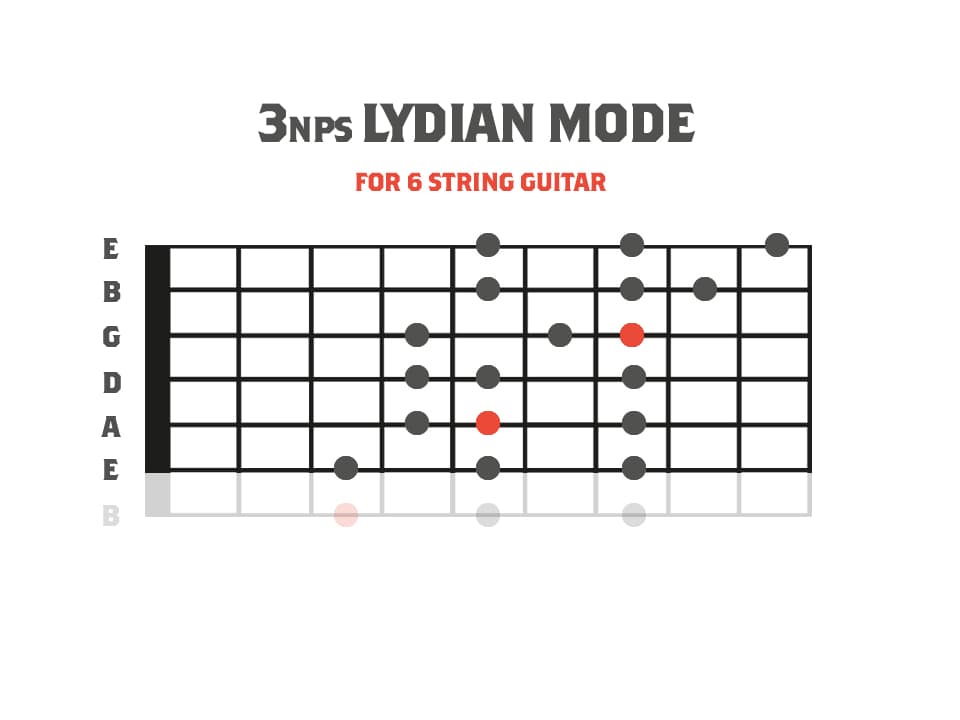
Download The eBook – Become A Strings of Rage™ Syndicate Member!
We’ve put this lesson into a single resource that contains all the diagrams, theory and tab from this lesson so you can learn these concepts properly in your own time.
Head over to our Patreon page and join one of our Strings of Rage™ Syndicate Membership tiers to unlock. All memberships help us to create better quality lessons and are helping us to craft a unique online learning experience. Thanks for the support!
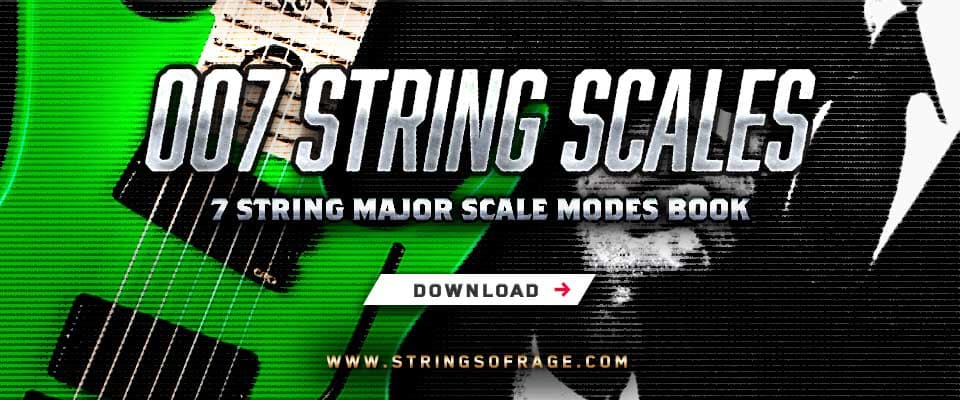
Footnote:
The guitar in the cover image for this post is a Dean RC7 Rusty Cooley in Nuclear Green

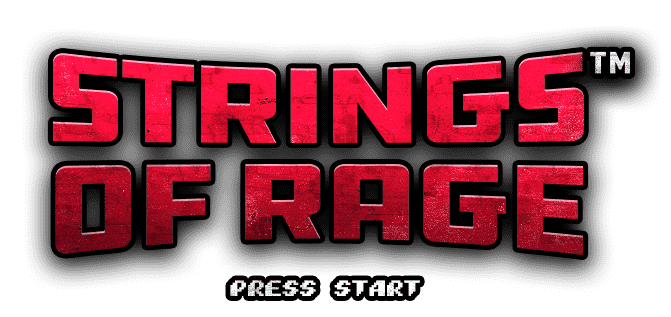
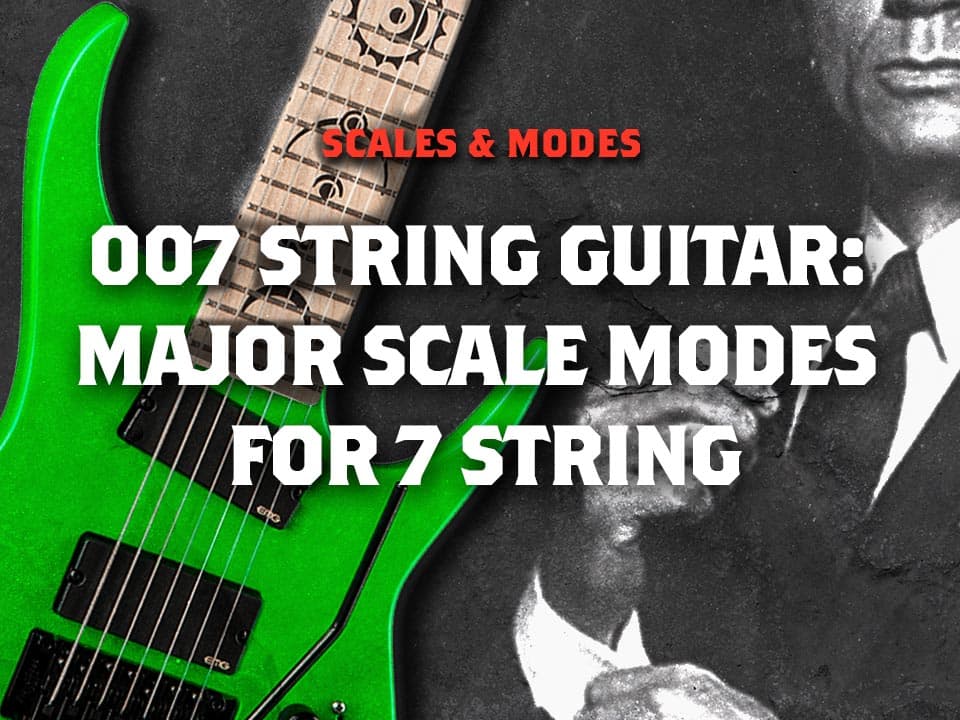
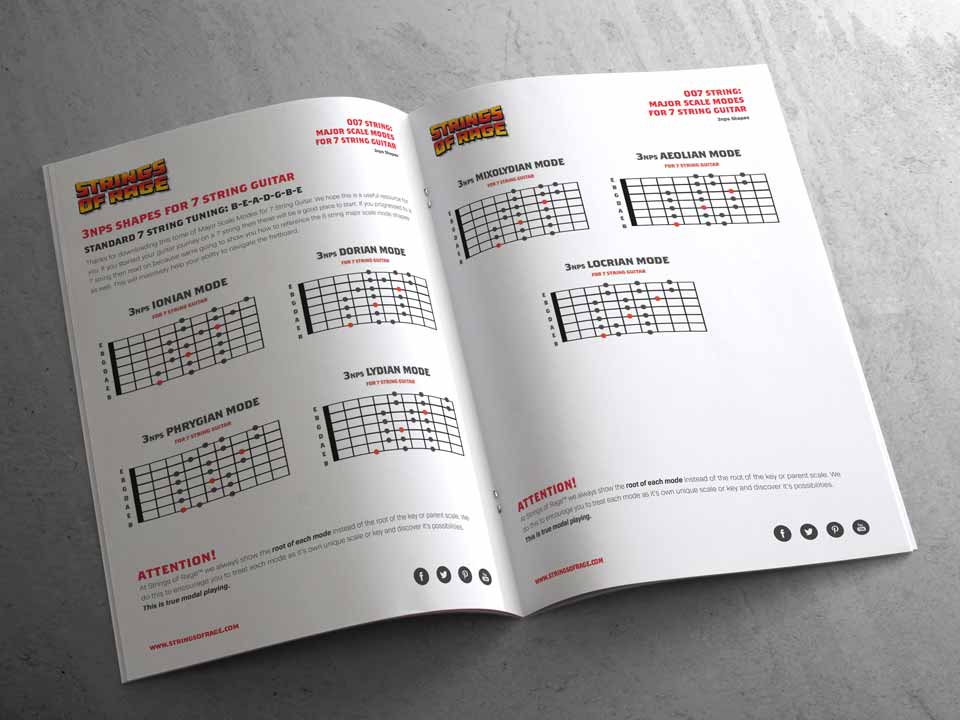
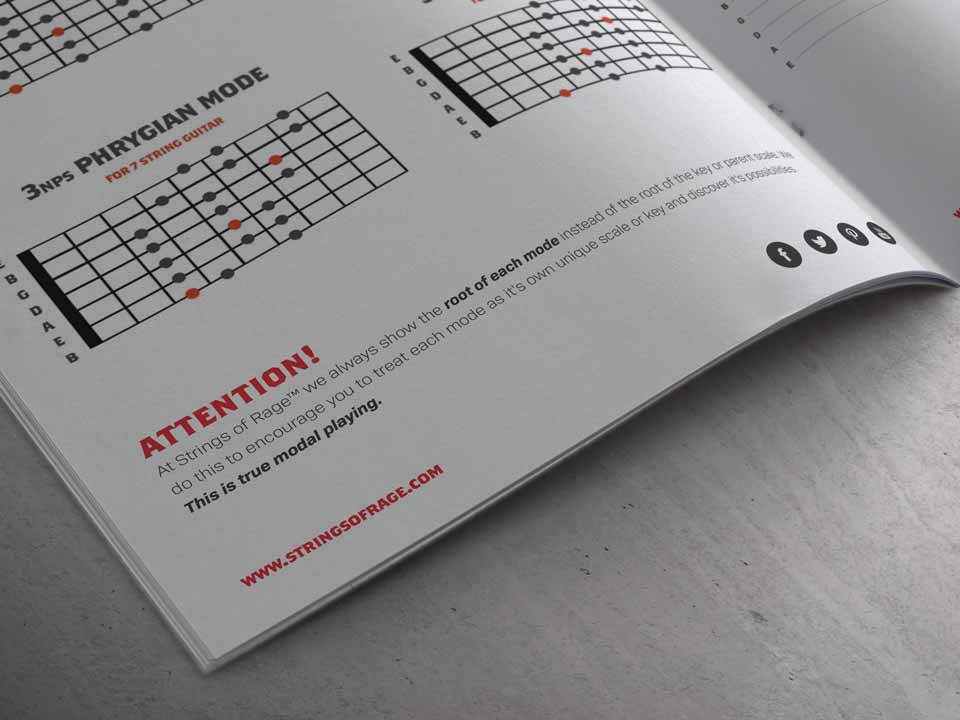
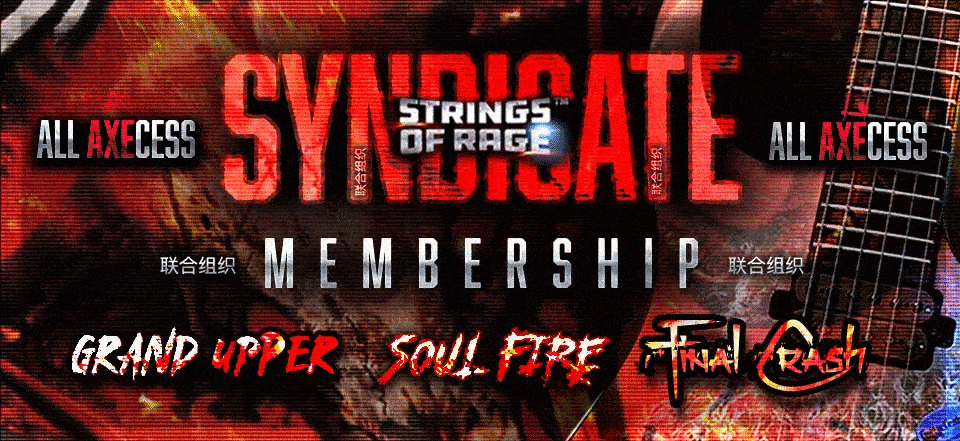



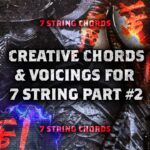


5 Comments
this is my base scale that i learned back in the day and i love how you guys transposed it to 7 string! quick question: will you guys ever do cage system for seven string? that would be amazing! thank you again for all the hard work!
Hey Paris!
I have to say we’ve never really used the caged system as we’ve not found it particularly helpful. We might touch on it in the future but as we’re not heavy users of it we probably won’t go into too much detail with it.
Cheers again!
Roger that! makes sense to me! thank you!
i think there might be an error in the imagines , it looks like its “D#” if it was in “B” standard, so if it is a “C” note then its “A” standard tuning not “B” standard.
sorry was just confusing myself thanks for your time relized i just randomly stated information without think it though do ignore me